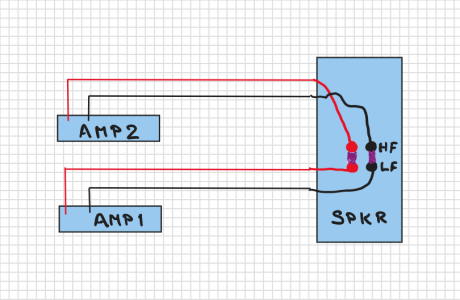corElement
Well-Known Member
Hi, had a question
If I have a speaker pair with total of 8 bindings posts for woofer / tweeter and both are connected using 4 bridges, if I have 2 amplifiers, and both remain connected, but I alternate between amplifiers where one stays off while the other one plays, should I expect everything to go kaput?
If I have a speaker pair with total of 8 bindings posts for woofer / tweeter and both are connected using 4 bridges, if I have 2 amplifiers, and both remain connected, but I alternate between amplifiers where one stays off while the other one plays, should I expect everything to go kaput?


